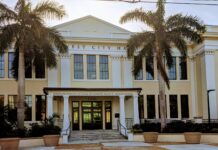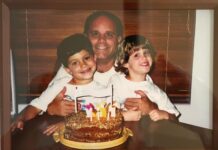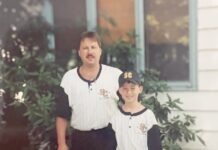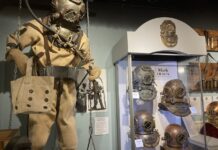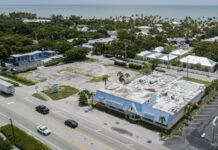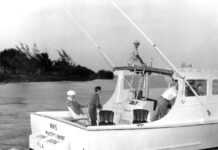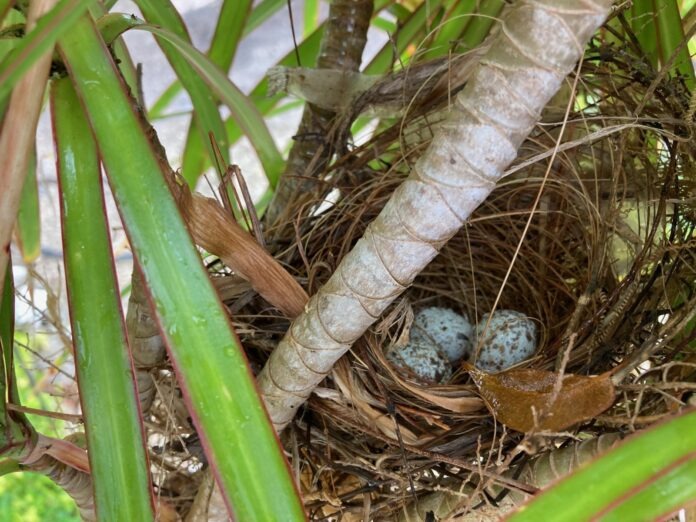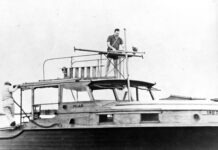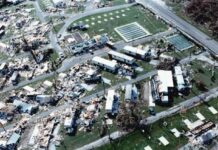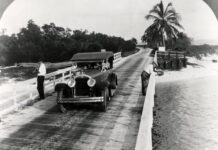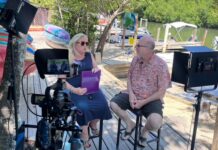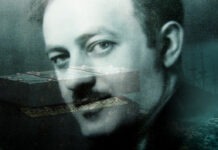Some people say seeing a cardinal in your yard is a sign the spirit of a loved one or an angel is near. If that is true, we have been absolutely haunted on Sioux Street for more than a decade.
Every year, we have watched cardinal parents rear their fledglings in the yard. Watching mom and dad teach the kids to fly and hunt has been a yearly thrill. However, it looks like this year might be a little different.
The brightly colored males with their striking red plumage are hard to miss. In the late 1800s and early 1900s, there was a community in North Key Largo named for the colorful birds, called Red Bird City. There is not a great deal known about it or where exactly it was located, as only a handful of documents mention the place, and none give more than a North Key Largo location. Some suggest Red Bird City was in the area of Dagny Johnson Key Largo Hammock Botanical State Park.
While those who lived there relied on farming and fishing, it was called Red Bird City because one of the industries that supported the small community was catching and selling cardinals. One of the stories shared about Red Bird City includes an interview with Ridley Curtis Pinder, who grew up there.
Born in 1888 in Cherokee Sound, Bahamas, he moved with his family to Key Largo at the age of 3. According to a newspaper article that appeared in the May 5, 1968, edition of the Miami Herald, “‘Key Largo was full of redbirds, especially in the winter,’ said Pinder, who helped to catch them in traps made by tearing the fibrous stems of coconut leaves apart and weaving the strips together. ‘We also caught quite a large number of non-pareils — painted buntings. They were very popular.’”
The trapped birds were taken to Key West, where they were shipped to Havana and sold as caged songbirds. Because cardinals mate for life, the song the caged birds sang was probably sad.
This nesting season was certainly beginning to look like Red Bird City at the Sioux Street office. I watched two cardinals build a nest in the backyard — a remarkably delicate process considering they have no fingers to weave their tight little nests out of pieces of dead plant material — and a few pieces of white plastic. They built it in the twisting branches of a red flame vine just outside the sliding glass door to the backyard patio. If I went outside and stood on my tiptoes, I could peek inside.
The nest was clearly visible from inside the house, and before long, there were two speckled eggs inside. For 10-14 days, I watched the mama sit on the eggs until they hatched. One day, I noticed the male in the nest. When I looked outside, two small, broken, speckled eggs were on the ground.
For a day or two, I watched the male swoop in to help feed the chicks. On a Sunday morning, I sipped coffee at the kitchen window and watched the male land in the nest and then fly away. It was the last time I saw either bird in the nest. The following morning when I looked in the nest, it was empty. It could have been a rat, a tokay gecko or a snake that preyed on the nest — maybe it was something else.
Ten days or two weeks later, I discovered a second cardinal nest. It was in the front yard, but again, very close to the house. It had been built (and concealed) inside a shrub in one of the tall white planters bordering the walkup to our house. Unlike the backyard nest, I never saw this one being built and only found it by accident. On a Wednesday, I noticed a flurry of bird feathers on the pea rock near the planter’s base. They clearly belonged to a female cardinal. I imagined the bird had been the victim of either a hawk or this pudgy orange cat that sometimes roams through our yard like it owns the place — which drives Bijou, our indoor cat, bonkers.
On Thursday morning, I saw a male cardinal fly out of the shrub and because of my experience in the backyard, I wondered if there was a nest there, too. I peeked inside the bush, and lo and behold, there was a nest with three small speckled eggs inside.
I never saw the male inside the nest again. He would land near the nest but never on the shrub where it had been so secretly built. When I walked by the planter Friday morning, I could tell the nest had been disturbed. Two of the eggs had been knocked out of the nest and had fallen into the planter. They were still intact. When I parted some of the leaves and looked inside, the nest was at a 45-degree angle. One egg remained inside.
It could have been one of the snakes I see in the yard looking for a snack. A large black racer routinely slithers around the yard and sometimes gets up in the planters. I righted the nest, did my best to tuck it back within the “safe” confines of the shrub, and tucked the two fallen eggs back inside. I saw the male cardinal land nearby once or twice in the following days, but I never saw him get more than a couple of feet from the shrub.
So, it does not look like it will be an active cardinal rearing season in the yard this year. Soon, the nest will be forgotten, the three eggs will rot, the surviving cardinal will find a new mate, and the two failed nests in my yard will become as forgotten as the location of Red Bird City.
